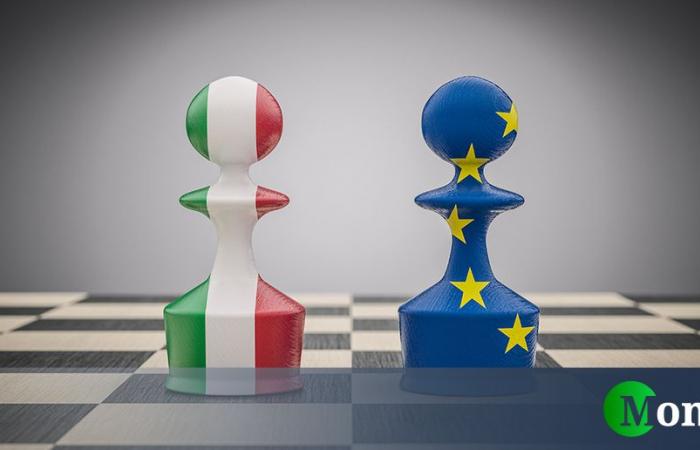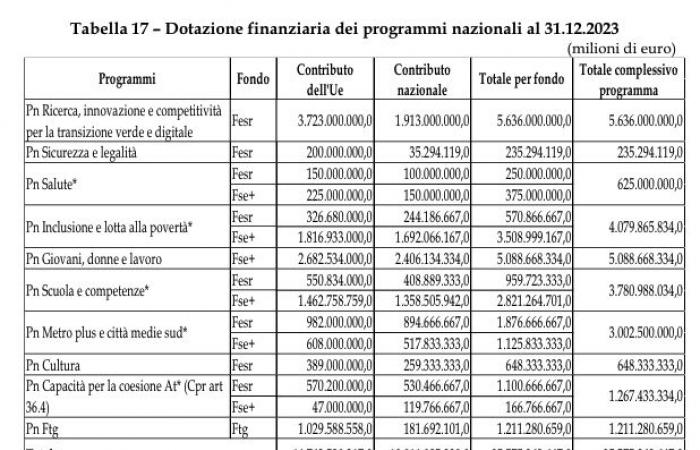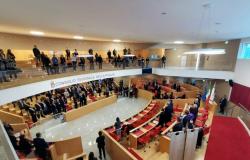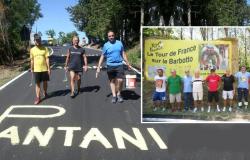How much money does Italy give to the European Union, as a Member State? In other words, what is the Italian contribution to the EU budget and how are European contributions spent in our country?
The calculation and the maximum amounts to be dedicated to the contribution to the European budget are established ex ante and unanimously by all member states. In fact, it is the “Own Resources” that finance the general budget, which effectively constitute all the financial resources that each Member State pays to Europe, so as to co-finance community policies and fundamental objectives.
As Alberto De Pasquale explains in his article “In seven years, Italy has paid 116 billion to the EU” on Money.it, “Italy continues to be a net contributor if we consider the exchanges of “ordinary” resources (without therefore considering the PNRR, ed.). In 2022, the latest reference year available, Italy has paid 16.7 billion euros to the EU (down 7.6% compared to the 18.1 billion paid in 2021). In the same year he received 14.3 for various subjects: among the most conspicuous, the heading “cohesion, resilience and values” (6.2 billion), “natural resources and environment” (5.6) and “single market, innovation and digital” (1.9) . Also in 2022, therefore, Italy’s credits to the EU exceeded the amount of EU payments to Italy, with a negative net balance of almost 2.4 billion”.
How much money does Italy give to the European Union?
The Own Resources System is regulated by a Council Decision which defines the details of financing for each financial planning period, typically seven years. The one currently active is the 2021-2027 Programming.
And it is the costs that each Member State, sacrificing part of its own wealth, contributes to transforming those “own resources” into “common own resources”.
The current programming arises from a plan for the recovery of the Union presented by the Commission, with a focus on the green and digital transition, which led to the seven-year budget of the Union (2021-2027 long-term Eu budget & Next Generation Eu), from the overall value of 1,824.3 billionof which 1,074.3 coming from the Multiannual Financial Framework (MFF) and 750 between grants (390) and loans (360) intended for the Next generation Eu.
The general regulations are contained in regulation of the European Parliament and of the Council, n. 2060 of 24 June 2021which defines the common provisions and financial rules applicable to the European Regional Development Fund (ERDF), the European Social Fund Plus (ESF+), the Cohesion Fund (FC), the Just Transition Fund (Ftg) , to the Fund
European Union for Maritime Affairs, Fisheries and Aquaculture (EMFF).
The Cohesion Policy for the 2021-2027 cycle confirms the GNI (Gross National Income) as the criterion for assigning the
resources, distributed in the case of Italy in light of the division of the Regions into three categories: “more developed”, “in transition” and “less developed”.
With the Partnership Agreement for Italy (Commission implementing decision C(2022)4787 of 15 July 2022165), interventions are envisaged in the context of 5 Strategic objectives (Os) indicated by the regulation of common provisions on funds a
shared management n. 1060/2021166.
As the following table highlights, we observe the breakdown by strategic objective of the overall financial allocation on the ERDF, ESF+ and FTG (and national co-financing), equal to 74,067.3 billion.
Overall financial allocation for OS (millions of euros)
| Strategic objectives | Endowment as of 31.12.2023 |
|---|---|
| Os 1 – More competitive and intelligent Europe | 16,689.5 |
| Os 2 – Resilient, greener Europe | 14,506.3 |
| Os 3 – More connected Europe | 2,274.0 |
| Os 4 – More social and inclusive Europe | 31,991.1 |
| Os 5 – Europe closer to citizens | 3,755.8 |
| Specific objective of the Ftg | 1,162.8 |
| Technical assistance | 3,687.9 |
Total: 74,067.3
Almost half of the total resources are allocated to OS 4, relating to a more social and inclusive Europe (32 billion).
Followed by Os 1 relating to a more competitive and intelligent Europe (16.7 billion) and Os 2 relating to a more resilient and greener Europe (14.5 billion).
The resources of the 2021-2027 programming addressed to national cohesion policies through the Partnership Agreement and the 2021-2027 programs are equal to 75 billion eurosof which 42.7 from EU resources (ERDF, FSE+, FEAMPA, FTG).
The following table provides an overall picture of the funds allocated to socio-economic cohesion policies in the 2021-27 programming, including both the funds from the EU and national budget (co-financed programmes), and the
resources under the exclusive responsibility of the national budget (FSC).
Financial resources of cohesion policies 2021-2027 (million euros)
Source: Court of Auditors
As of 31 December 2023, all 48 national and regional programs of the 2021-2027 cycle co-financed by ERDF, FSE+ and FTG have been adopted. The following tables show the relative financial allocation for the national programs and regional programs respectively.
Table 17 – Financial allocation of national programs as of 31.12.2023
Source: Court of Auditors
This photograph of the state of the EU budget relating to Italy is partial when compared with the detailed report on the state of Italy-EU relations drawn up by the Court of Auditors, which we recommend reading for further information:
ANNUAL REPORT 2023 – COURT OF AUDITORS
Financial relations with the European Union and the use of European funds
The weight of the PNRR
Italy has received significant financial support under the National Recovery and Resilience Plan (PNRR), part of the Next Generation EU (NGEU) initiative. The recovery and resilience plan has given Italy 47.2 billion eurosfunds intended to support post-pandemic recovery through strategic interventions, including:
- Digitalization and innovation: to improve technology and innovation in various economic and public sectors.
- Ecological transition: investments to promote environmental sustainability and the reduction of carbon emissions.
- Infrastructure for sustainable mobility: to strengthen transport infrastructure, with particular attention to sustainable mobility.
- Education and research: to strengthen the country’s education system and research capabilities.
- Social inclusion and health: to improve health services and social inclusion policies to address inequalities.
The net balance, which represents the difference between the funds received from the EU and the contributions paid by Italy, shows a reversal of trend since the introduction of the PNRR and the NGEU. Historically, Italy has been a net contributor, paying more funds than it has received. However, the current financial structure and new initiatives have altered this dynamic, making a direct comparison with previous years difficult in light of the complexity of the new financial instruments and changes to the Multiannual Financial Framework (MFF).









